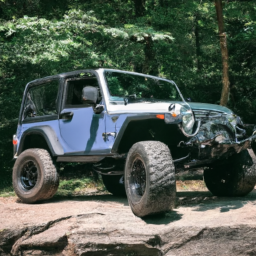
Replacing the anti-roll (sway) bar on a Jeep Wrangler TJ involves several steps and requires specific tools and equipment. click here for more details on the download manual…..
- Jeep Wrangler Common Rust Spots: TJ [Watch BEFORE You Buy] The Jeep Wrangler rusts super bad. Here’s what to look for to make sure your TJ Jeep is still roadworthy, structurally sound, and in …
- How To Replace The Power Steering Gear Box On A Jeep Wrangler Tj Brian Eslick from How to Automotive http://www.howtoautomotive.com takes you step-by-step through the process of replacing the …
Below are detailed instructions along with the necessary tools for the process.
### Tools and Equipment Needed
– **Jack and Jack Stands**
– Used to lift and secure the vehicle safely.
– **Socket Set (Metric)**
– Generally, sizes from 10mm to 18mm are required; ensure you have both deep and shallow sockets.
– **Wrench Set**
– A set of open-end and box wrenches can be helpful for accessing tight spaces.
– **Torque Wrench**
– Essential for ensuring that bolts are tightened to the manufacturer’s specifications.
– **Pry Bar**
– Useful for removing stubborn parts or providing leverage.
– **Hammer**
– May be needed to tap out bolts or sway bar links that are stuck.
– **PB Blaster or Penetrating Oil**
– To help loosen any rusted or seized bolts.
– **Safety Glasses and Gloves**
– Personal protective equipment to protect your eyes and hands during the process.
### Replacement Steps
– **Preparation**
– Park the Jeep on a level surface and engage the parking brake to prevent movement.
– Wear safety glasses and gloves for protection.
– **Lifting the Vehicle**
– Use a jack to lift the front of the Jeep.
– Secure the vehicle with jack stands under the frame, ensuring it is stable and safe to work under.
– **Removing the Wheels (Optional)**
– For better access, you may choose to remove the front wheels using a socket and wrench. This step is optional but can make the job easier.
– **Inspect the Existing Sway Bar**
– Before removal, inspect the sway bar, links, and bushings for wear. This will help determine if you need to replace other components as well.
– **Loosening the Sway Bar Links**
– Locate the sway bar links, which connect the sway bar to the control arms.
– Apply penetrating oil to the bolts if they appear rusted. Allow it to soak for a few minutes.
– Using the appropriate socket or wrench, loosen and remove the nuts on both ends of the sway bar links.
– **Removing the Sway Bar Bushings**
– Locate the sway bar bushings that secure the sway bar to the frame.
– Use a socket and wrench to remove the bolts securing the bushings. There may be two bolts for each bushing.
– Once the bolts are removed, slide the sway bar out of the bushings.
– **Removing the Sway Bar**
– With the links and bushings removed, carefully slide the sway bar out from the vehicle.
– If it is stuck, use a pry bar to gently coax it out.
– **Installing the New Sway Bar**
– Take the new sway bar and position it in the same orientation as the old one.
– Slide the sway bar into the bushings, ensuring it fits snugly.
– **Securing the Sway Bar Bushings**
– Reinstall the bolts for the sway bar bushings using the socket and wrench.
– Tighten them to the manufacturer’s specified torque settings.
– **Reattaching the Sway Bar Links**
– Align the sway bar with the control arms and reattach the sway bar links.
and reattach the sway bar links.
– Ensure the links are oriented correctly and secure them with the nuts.
– Tighten the nuts to the manufacturer’s specified torque.
– **Rechecking All Connections**
– Go through all the bolts and nuts to ensure everything is secured properly.
– Double-check that the sway bar is properly aligned and not obstructing any components.
– **Reinstalling Wheels (If Removed)**
– If you removed the wheels, reinstall them and tighten the lug nuts in a star pattern to ensure even pressure.
– **Lowering the Vehicle**
– Carefully lower the Jeep back to the ground using the jack, and remove the jack stands.
– **Final Inspection**
– Once the vehicle is back on the ground, perform a final inspection to ensure all components are properly secured and nothing is loose.
### Conclusion
Replacing the anti-roll bar on a Jeep Wrangler TJ can be a straightforward process if you follow these steps and use the right tools. Always refer to a service manual for specific torque specifications and guidelines for your model, and if in doubt, consult a professional mechanic.
The transmission fluid dipstick is a crucial component in automatic transmission systems, serving as an indicator of the transmission fluid level and its condition. Typically made of metal or durable plastic, the dipstick is designed to be easily accessible, allowing vehicle owners and mechanics to perform routine checks without extensive disassembly.
Located within the engine compartment, the transmission fluid dipstick is usually marked with a brightly colored handle for easy identification. It features a long, slender shaft that extends into the transmission fluid reservoir. when checking the fluid, the dipstick is removed, wiped clean to remove any residue, and then reinserted to gauge the fluid level. The dipstick is marked with indicators that show the acceptable range for fluid levels—usually marked as “full” and “add”—which helps determine if the fluid needs to be topped off.
In addition to measuring fluid levels, the dipstick can also provide insight into the fluid’s condition. Healthy transmission fluid typically appears red and clear, whereas dark or burnt-smelling fluid may indicate a need for a fluid change or potential transmission issues. Regularly checking the transmission fluid using the dipstick is essential for maintaining the health and longevity of the transmission system, as proper fluid levels and quality are vital for smooth operation and efficient gear shifting. Neglecting this component can lead to transmission overheating, poor performance, and ultimately, costly repairs.
Cleaning the throttle body on a Jeep Wrangler TJ can improve engine performance and responsiveness. First, gather necessary tools: a throttle body cleaner, a soft brush, and a clean rag. Disconnect the negative battery terminal for safety. Remove the air intake hose from the throttle body, then spray the cleaner into the throttle body while moving the throttle plate to access all areas. Use the soft brush to gently scrub away carbon buildup. Wipe any residue with a clean rag. Reassemble the components, reconnect the battery, and start the engine. Check for smooth operation and any warning lights. Regular cleaning can help maintain optimal engine function.